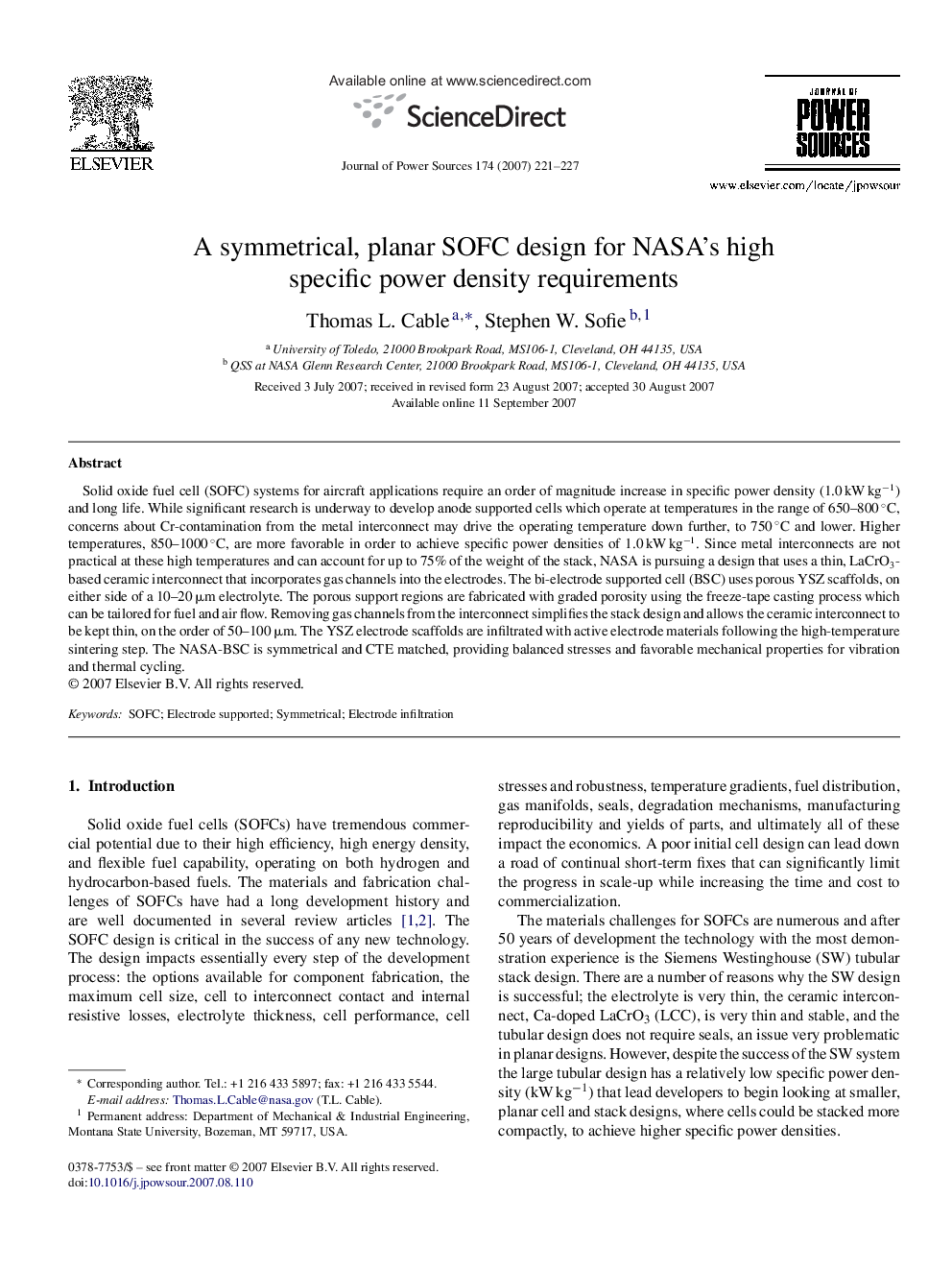| کد مقاله | کد نشریه | سال انتشار | مقاله انگلیسی | نسخه تمام متن |
|---|---|---|---|---|
| 1286120 | 973174 | 2007 | 7 صفحه PDF | دانلود رایگان |

Solid oxide fuel cell (SOFC) systems for aircraft applications require an order of magnitude increase in specific power density (1.0 kW kg−1) and long life. While significant research is underway to develop anode supported cells which operate at temperatures in the range of 650–800 °C, concerns about Cr-contamination from the metal interconnect may drive the operating temperature down further, to 750 °C and lower. Higher temperatures, 850–1000 °C, are more favorable in order to achieve specific power densities of 1.0 kW kg−1. Since metal interconnects are not practical at these high temperatures and can account for up to 75% of the weight of the stack, NASA is pursuing a design that uses a thin, LaCrO3-based ceramic interconnect that incorporates gas channels into the electrodes. The bi-electrode supported cell (BSC) uses porous YSZ scaffolds, on either side of a 10–20 μm electrolyte. The porous support regions are fabricated with graded porosity using the freeze-tape casting process which can be tailored for fuel and air flow. Removing gas channels from the interconnect simplifies the stack design and allows the ceramic interconnect to be kept thin, on the order of 50–100 μm. The YSZ electrode scaffolds are infiltrated with active electrode materials following the high-temperature sintering step. The NASA-BSC is symmetrical and CTE matched, providing balanced stresses and favorable mechanical properties for vibration and thermal cycling.
Journal: Journal of Power Sources - Volume 174, Issue 1, 22 November 2007, Pages 221–227